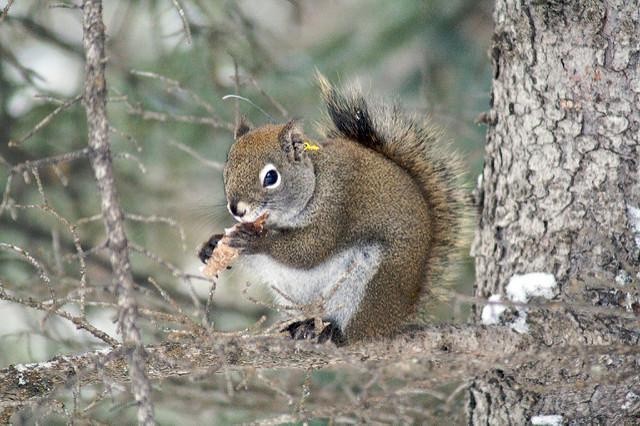Conifer plantations, which are being spread across the UK to prevent climate change and promote biodiversity, are putting one of the primary species they were supposed to safeguard in jeopardy: red squirrels.

Red Squirrels
Red squirrels were thought to thrive in coniferous habitats because the food sources in such forests are limited to small seeded cones. Red squirrels are better at exploiting than the more generalist grey squirrels. The threatened red squirrels were thought to thrive in coniferous habitats because the food sources in such forests are limited to small seeded cones, which red squirrels are better at exploiting than the more generalist grey squirrels. As a result, red squirrels should do better in coniferous plantations than grey squirrels.
However, the current study contradicts this belief by emphasizing the importance of pine martens. These native predators, like the red squirrel, were in scarce supply until recently. Pine martens are typically helpful for red squirrel populations, at least in native broadleaf forests, because they restrict the numbers of grey squirrels according to their population recovery.
Related Article: Rewilding Wildlands: Farmers in England are Given Incentives to Participate in Nature Recovery Programs
Lack of Food Sources
According to the study, this was not true in conifer plantations, where pine martens lack different food sources and instead hunt on red squirrels, converting them from a defender to a menace, which was published in Proceedings of the Royal Society B.
Scientists from Queen's University Belfast and the University of St Andrews utilized camera traps to scan more than 700 locations around Northern Ireland for red squirrels, grey squirrels, and pine martens during five years, with the assistance of Ulster Wildlife and citizen scientists.
"In natural woods, there are different kinds of food and lots of refuges for squirrels, so red squirrels don't get predated all that often," Dr. Joshua Twining, principal author of the study from Queen's University in Belfast, explained the findings. However, pine martens will consume red squirrels to live because there is no diversification or alternate prey in conifer plantations with a single species planted and of uniform age, and there are no refuges.
Examining
According to the findings, forest managers should examine whether conifer plantings should be prioritized over native broadleaf plants. "We need to change our strategy: if we continue to develop conifer plantatioEnvironmental Agency Allegedly Told Staff to Ignore Reports on Low-Impact Pollution Due to Budgetary Reasons
ns instead of natural woods, the red squirrel's survival may trigger its extinction in some areas," he said. According to the researchers, non-native wood plantations, such as the Sitka spruce, make up almost three-quarters of the UK and Ireland's forested area.
Conifer plantations have long been a source of worry for ecologists since they are monocultures frequently harvested after a few decades and may produce less variety than natural broadleaf species. However, in the UK and Ireland, government planting initiatives favor conifers, which are easier to grow and harvest.
"We are dedicated to taking steps to rehabilitate our vulnerable native species in England, such as the red squirrel," a representative for the UK Department for Environment, Food and Rural Affairs stated. Coniferous tree planting is low in England, with our Nature for Climate Fund focussing on the large-scale development of native broadleaf woods. This, in conjunction with our England Trees Action Plan, will aid the recovery of native red squirrel populations throughout the country."
Also Read : Environmental Agency Allegedly Told Staff to Ignore Reports on Low-Impact Pollution Due to Budgetary Reasons
For the most recent updates from the animal kingdom, don't forget to follow Nature World News!
© 2025 NatureWorldNews.com All rights reserved. Do not reproduce without permission.





